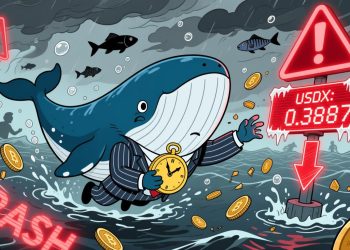-
The USDG stablecoin is issued out of Singapore by Paxos, and is broadly in line with the Monetary Authority of Singapore’s upcoming stablecoin framework.
-
Income derived from USDG’s reserves will be shared among the initial Global Dollar Network partners, which are Anchorage Digital, Bullish, Galaxy Digital, Kraken, Nuvei, Paxos and Robinhood.
A group of heavy hitters in the cryptocurrency space are backing a new, regulation-focused stablecoin, the Global Dollar (USDG), which aims to return yield earned on its reserve assets to participants who help accelerate its adoption.
Dubbed the Global Dollar Network, the original partners are Anchorage Digital, Bullish (the owner of CoinDesk), Galaxy Digital, Kraken, Nuvei, Paxos and Robinhood.
The USDG stablecoin is issued out of Singapore by Paxos, and is “substantively compliant” with the Monetary Authority of Singapore’s upcoming stablecoin framework, according to a press release.
“This is meant to really be a community token,” said Paxos CEO Charles Cascarilla in an interview. “Anybody can join the Global Dollar Network and accrue rewards for activity. We’re distributing something like 97% of the economics. That’s a big difference from how other stablecoins have been set up and created to date.”
Stablecoins are a big business which has been dominated by two giants, Tether – whose (USDT) is the largest stablecoin by a wide margin – and the next biggest, Circle and its (USDC). Unlike the new USDG, both Tether and Circle retain all the interest from reserves. There are other yield-sharing stablecoins as well as some interesting protocol-level innovation from the likes of the M^0 project.
Income generated from USDG’s reserves, which like many stablecoins are U.S. Treasuries, will be shared out among participants based on the ways these firms can create connectivity and liquidity, Cascarilla said.
“The way we have set this up is that the participants are being rewarded for activity that helps grow the utility of the network,” he said. “That could be for a number of activities; different participants can be rewarded in different ways, because not everyone does the same thing, and that’s actually what makes a thriving ecosystem.”
By rewarding participant companies rather than end users of the platform, the USDG stablecoin is available in the U.S. via the footprint of the distribution partners, such as Anchorage, which operates in all 50 U.S. states.
DBS Bank, Southeast Asia’s largest bank by assets, will serve as the primary banking partner at launch for cash management and custody of USDG reserves.
UPDATE (Nov. 4, 2024, 22:41 UTC): Notes that Anchorage operates in every U.S. state.






























